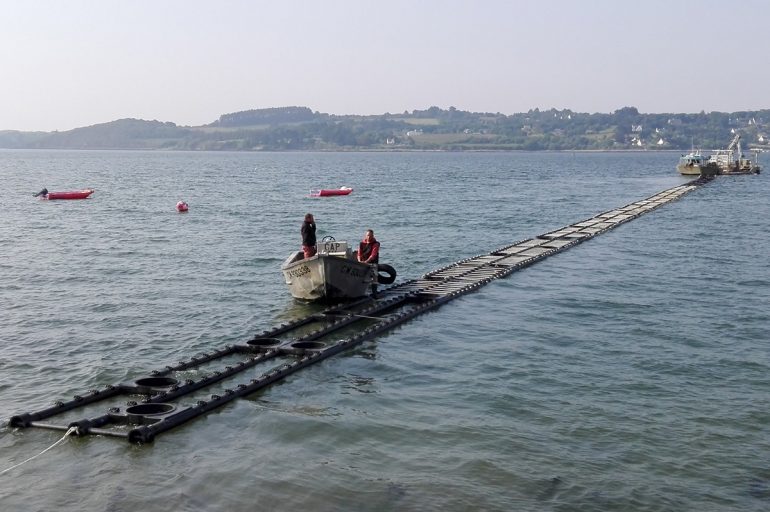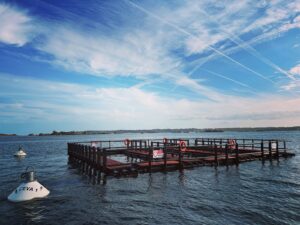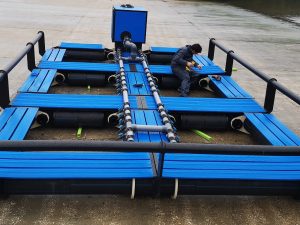
Novel system for open sea oyster cultivation, designed and assembled in cooperation with Naberan and a French oyster farmer
Until now, a system of buoys and ropes has been used, which requires a lot of assembly and revision work due to the tension needed in the system for the oyster baskets to have a proper arrangement on the line. This structure, on the other hand, offers a firm support because the cultivation ropes can be tensed individually, thus making it easier for the baskets to remain horizontal on the water column.
During the winter it will be placed at around 5 metres depth underwater, therefore thicknesses and materials capable of resisting the pressure to which they will be subjected have been employed. In these circumstances many of the buoys in the traditional system tended to become deformed, losing their flotation capacity and putting the whole line at risk.
.
It has 130 metres in length and is made up of 3 floating pipes
Soon its equipment will be finished with support ropes for the baskets and taken to its final offshore location in the north of France. Four days have been needed for its assembly and modern welding techniques and special pieces have been used for pipe jointing and for securing the cultivation ropes.
In recent years, TEPSA has developed a number of pieces exclusively designed for the manufacture of floating structures, which allow for the connection of different pipe diameters and other fittings such as pieces for the support of cultivation ropes. In this structure several pieces manufactured exclusively by TEPSA have been used, giving the structure a great consistency.
The structure is manufactured with 100% Hight Density Polyethylene with food quality and it includes a system of interior walls which divide in watertight sections of 12.5 metres each. It has been assembled using butt-fusion welding techniques and computer numerical control machines. This allows for the fusion of all the components making up the line, giving the structure an enormous resistance.
If the first tests are successful, the objective is to install several new lines next year.
For this, TEPSA’s technical team is already working on this structure’s monitoring plan, with the aim of optimising its design if any improvement issues come up, but studies are also underway for improving the pre-assembly at the factory in Muras (Lugo), as well as for reducing the time needed for the set-up at the final destination in order to shorten delivery times of future installations.
.









